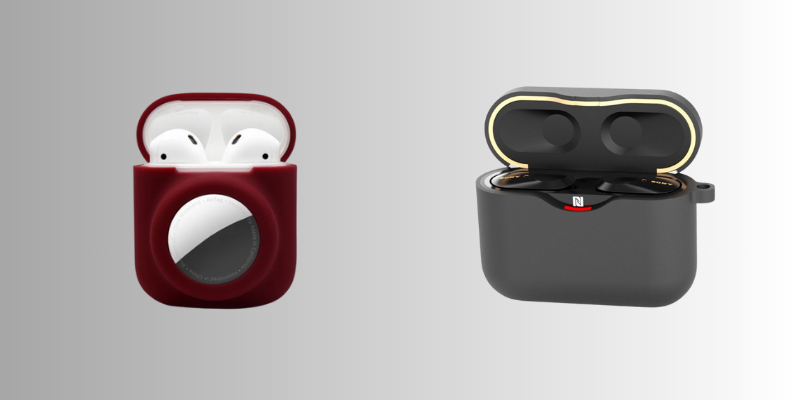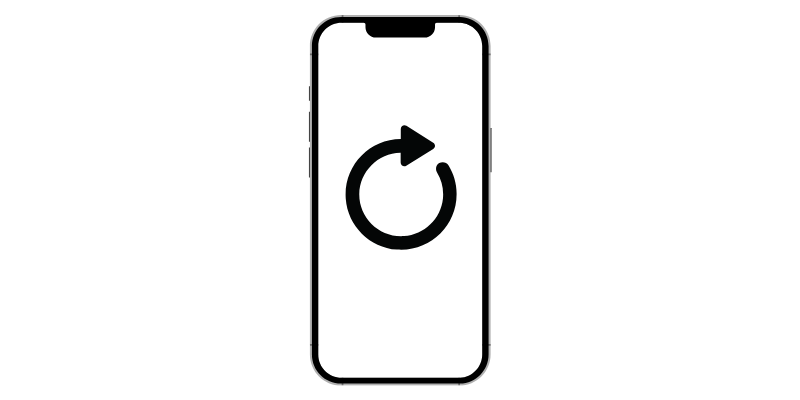
Whether you’re commuting, sitting in a coffee shop, or simply waiting in line, chances are you’ve noticed someone glancing at your phone screen. It might seem harmless, but in the age of digital privacy, even a quick glance can reveal sensitive information—from personal messages and photos to financial details.
That’s where smartphone privacy screen protectors come in. These slim, often invisible add-ons limit side visibility, so only you can see your screen clearly, while anyone beside you sees a darkened display. But how do they work, and are they actually worth it?
Let’s break it down.
What Is a Privacy Screen Protector?
A privacy screen protector is a thin layer of material that’s applied to the front of your smartphone screen—similar to a regular screen protector, but with one key difference: it’s designed to limit viewing angles.
Unlike standard protectors that focus on preventing scratches or cracks, privacy screen protectors are built with micro-louver technology—a special filter layer that blocks visibility from side angles. This makes it extremely difficult for anyone not directly in front of the screen to see what you’re doing.
Most are made from tempered glass or PET film, and many come with added features like:
- Anti-glare or matte finish
- Scratch resistance
- Smudge and fingerprint protection
Whether you prefer a crystal-clear display or a more matte, anti-glare look, there are options to suit different needs.
Check out our iPhone screen protectors.

How Does a Smartphone Privacy Screen Protector Work?
At a glance, a privacy screen protector looks just like any standard screen protector—but what makes it different is the technology layered inside.
Most privacy protectors use what's known as micro-louver technology, similar to the way window blinds work. These microscopic vertical filters are built into the material and only allow light to pass through from certain angles—typically straight on, around 60 degrees or less. When someone tries to view your screen from the side, the filters block most of the light, making your screen appear dark, tinted, or even black.
Here’s how it works in real-world use:
- You (looking straight at your phone): clear, bright screen
- Person sitting next to you (30–45° angle): sees a dark or blank screen
- People behind or beside you: see nothing useful
Some advanced models also feature anti-glare coatings, which reduce screen reflections in bright environments, and blue light filters for enhanced eye comfort.
Does it affect how your screen looks or feels?
A little. High-quality privacy protectors will retain most of your screen's sharpness and touch sensitivity, though you might notice:
- Slight brightness reduction
- A very minor tinting effect
- Sometimes a slightly less responsive touch (more common in cheaper models)
Suppose you spend a lot of time outside or use your phone in bright lighting. In that case, it’s worth choosing a privacy protector designed for daylight visibility or one with adaptive brightness compatibility.
Who Should Use a Privacy Screen Protector?
Privacy screen protectors aren’t just for techies or secret agents — they’re for anyone who uses their phone in public and wants to protect their personal information.
Here are a few groups who benefit the most:
Business Professionals
If you regularly check emails, review client data, or join video calls on the go, you’re a prime target for shoulder surfing — the act of someone glancing at your screen to see what you’re doing. A privacy screen makes it almost impossible for anyone nearby to see confidential content.
Commuters and Travelers
Whether you’re riding public transportation or waiting at the airport, your screen is often on full display. A privacy protector helps you scroll, message, or bank without worrying about strangers peeking over your shoulder.
Everyday Phone Users
Even if you’re not dealing with sensitive work info, you probably don’t want people reading your texts, seeing your notifications, or viewing your photos while you’re in line at a coffee shop.
Parents and Guardians
Want to give your child more privacy or restrict screen visibility in certain situations? Privacy screen protectors can limit who sees what without having to hover over their shoulder.
Security-Conscious Users
If you’re serious about digital security and personal privacy, a screen protector is one of the simplest but most effective upgrades you can make.
Check out our Samsung Galaxy screen protectors.

Key Benefits of Using a Privacy Screen Protector
While a standard screen protector guards against scratches and smudges, a privacy screen protector adds another layer of defense—against unwanted attention. Here’s why it’s worth considering:
1. Visual Privacy in Public Spaces
This is the core benefit. Whether you're texting, online banking, or entering a password, a privacy screen ensures that only you can see what’s on your display. Anyone off to the side sees little more than a dim or blacked-out screen.
2. Screen Protection
Most privacy protectors are made from tempered glass or tough PET material, offering solid protection against:
- Scratches from keys or coins
- Minor drops and impacts
- Daily wear and tear
It’s a privacy tool and a physical shield in one.
3. Anti-Glare and Smudge Reduction
Many higher-end models include anti-glare coatings, which help reduce screen reflections when you’re in bright environments. Matte finishes can also minimize fingerprints and smudges, keeping your screen looking cleaner longer.
4. Peace of Mind
Knowing your screen isn’t on full display gives you confidence to check sensitive content—like health records, bank statements, or private messages—without second-guessing who’s watching.
5. Reduced Screen Time Awareness
An underrated perk: privacy filters make it harder for people around you to tell what you’re doing. So if you’re browsing memes in a meeting (no judgment), it’s your secret to keep.
Are There Any Drawbacks?
As useful as privacy screen protectors are, they’re not perfect. Understanding the trade-offs can help you decide whether the benefits outweigh the minor inconveniences.
1. Slight Reduction in Screen Brightness
Because the privacy filter blocks light from side angles, it can also slightly dim your screen, even when you’re viewing it head-on. Most users don’t notice a big difference, but if you often use your phone in direct sunlight, you might find it a bit less readable.
2. Potential Impact on Touch Sensitivity
With cheaper or poorly installed protectors, you might experience a slight lag or reduced sensitivity when tapping or swiping. However, high-quality protectors are designed to maintain smooth touch performance.
3. Minor Color or Clarity Changes
Some privacy screens can cause subtle color shifts or slight haziness, especially around the edges. Again, this is usually minimal, but for users who prioritize display clarity (like photo editors or gamers), it could be noticeable.
4. Higher Cost Than Standard Protectors
Privacy screen protectors generally cost more than basic glass or film protectors. But for most users, the added privacy and protection justify the extra investment, especially considering how often we use our phones in public.
Check out our Google Pixel screen protectors.
What to Look for When Buying a Privacy Screen Protector
Not all privacy screen protectors are created equal. If you’re going to invest in one, it’s worth knowing what separates a high-quality protector from a cheap knockoff. Here’s what to consider before you buy:
1. Compatibility With Your Phone Model
Make sure the screen protector is designed specifically for your smartphone. Privacy protectors must be precisely cut to fit the display, front camera, and sensors—especially with edge-to-edge or curved screens.
2. Viewing Angle Coverage
Most privacy protectors limit visibility to around 28–60 degrees from the center. Look for specs that clearly state the viewing angle. Wider-angle protection is better for maximum privacy in crowded spaces.
3. Material Quality
Opt for tempered glass if you want strong impact resistance and a smooth, glass-like touch. PET film versions are usually thinner and cheaper, but not as durable or satisfying to use.
- Tempered Glass = premium feel, better protection
- PET Film = thinner, more flexible, less durable
4. Coating Features
A good privacy protector should also offer:
- Anti-glare or matte finish (for visibility in bright light)
- Smudge resistance (for cleaner visuals)
- Blue light filtering (optional, for eye comfort)
5. Case Compatibility
Check whether the protector works well with your existing phone case. Some edge-to-edge privacy screens can lift or peel when paired with bulky cases.
6. Reputable Brand and Reviews
Stick with trusted brands or highly rated options. Cheaper, no-name protectors often have poor adhesive, distorted privacy filters, or can even damage your screen with low-grade glue.
Are Smartphone Privacy Screen Protectors Worth It?
If you often use your smartphone in public, the answer is a resounding yes. Privacy screen protectors offer a relatively low-cost, low-effort way to protect your personal and sensitive information from prying eyes.
When They’re Absolutely Worth It
- You handle confidential work emails or sensitive data
- You use mobile banking or payment apps frequently
- You travel or commute regularly and use your phone in public
- You simply value peace of mind knowing your screen content stays private
When They Might Be Optional
- You mostly use your phone at home or in private settings
- You rarely open sensitive apps in public
- You don’t mind occasional side glances or prefer other privacy methods
The Bottom Line
In today’s world, where data privacy matters more than ever, a smartphone privacy screen protector is more than a gadget — it’s a smart investment in your digital security. Beyond privacy, it doubles as solid screen protection, helping keep your phone safe from scratches and smudges.
If you’re serious about maintaining control over your personal information, it’s definitely worth considering.
Check out our OnePlus screen protectors.
FAQs About Privacy Screen Protectors
Q1: Do privacy screen protectors really block side views?
Yes. They use micro-louver technology that restricts viewing angles, making it difficult to see your screen unless you’re directly in front of it.
Q2: Will a privacy screen protector work with my phone case?
Most do, but some edge-to-edge protectors might not fit well with bulky cases. Always check compatibility.
Q3: Can I remove and reuse a privacy screen protector?
Usually no. Once removed, the adhesive weakens, and reapplying may reduce effectiveness.
Q4: Do privacy screen protectors also protect against scratches?
Yes, especially tempered glass protectors—they serve dual purposes of privacy and physical protection.
Final Thoughts: Is It Time to Invest in One?
If you want to keep your smartphone screen private in public places, reduce the risk of visual hacking, and protect your device from daily wear, a privacy screen protector is a wise purchase. With various options to suit different budgets and preferences, it’s never been easier to add this layer of security.
Don’t wait for a nosy neighbor to catch a glimpse—take control of your privacy today.





Hinterlasse einen Kommentar
Diese Website ist durch hCaptcha geschützt und es gelten die allgemeinen Geschäftsbedingungen und Datenschutzbestimmungen von hCaptcha.